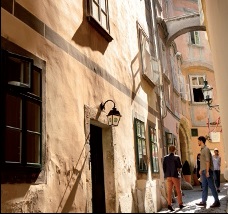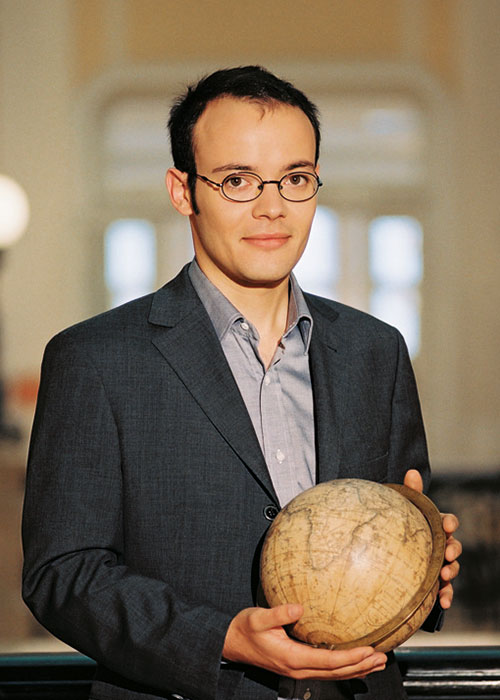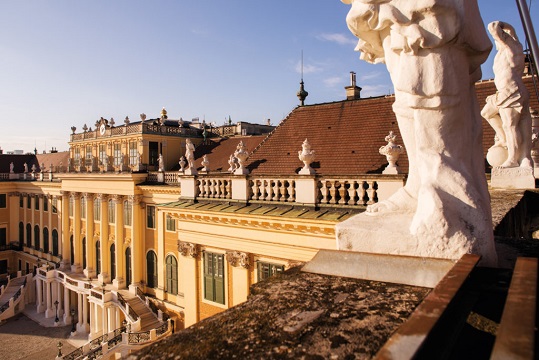The ultimate guide to antique hunting in Vienna
Steeped in centuries of history, it is no surprise that a weekend spent antique hunting in Vienna offers a treasure trove for collectors, art lovers and vintage fans. Our in-depth guide reveals the best places to head for some shopping, insider secrets from Viennese residents, and the sights you won’t want to miss.
Plan A Weekend Antique Hunting in Vienna

Discover art and antiques in Vienna
From the dramatic collection of Egon Schiele at the Leopold Museum, to the Klimts at the Belvedere Palace via the city’s antiques quarter, it is no wonder that Vienna is such magnet for art and antiques.
Head for the main museum – the Kunsthistorisches, a grand neo- Renaissance palace of art and culture just off the Ringstrasse – and, unlike most European galleries, you will be able to walk in without queuing. Highlights from what was once the Habsburgs’ royal collection include three of the Seasons paintings by Bruegel, and seminal work by Rubens, Titian, Velasquez, Vermeer, Durer, Raphael. The city is also home to two great Habsburg Imperial residences, the Hofburg (home to the Spanish Riding School) and the Schonbrunn, as well as St Stephen’s Cathedral and the Academy of Fine Arts including works Rubens, Rembrandt and van Dyke, and The Last Judgement by Hieronymus Bosch.
Renaissance palace of art and culture just off the Ringstrasse – and, unlike most European galleries, you will be able to walk in without queuing. Highlights from what was once the Habsburgs’ royal collection include three of the Seasons paintings by Bruegel, and seminal work by Rubens, Titian, Velasquez, Vermeer, Durer, Raphael. The city is also home to two great Habsburg Imperial residences, the Hofburg (home to the Spanish Riding School) and the Schonbrunn, as well as St Stephen’s Cathedral and the Academy of Fine Arts including works Rubens, Rembrandt and van Dyke, and The Last Judgement by Hieronymus Bosch.
Vienna and modernity
In addition to the familiar Gothic and Baroque buildings, Art Nouveau has a fixed place in Viennese architecture. At the turn of the 20th century, prominent architects such as Otto Wagner, Josef Hoffmann, Adolf Loos, and Joseph Maria Olbrich erected world-renowned buildings such as the Secession, the Postal Savings Bank, and the Loos House.
Head to the Dorotheum
 The jewel in the crown for anyone planning some time antique hunting in Vienna is a visit to the Dorotheum. Established in 1707 and situated in the heart of the first district, it is one of the world’s oldest auction houses. In addition to hosting weekly auctions and specialised sales, collectors can buy antiques in retail shops on the first and second floors. In some ways it’s like visiting a museum where you can buy what’s on display.
The jewel in the crown for anyone planning some time antique hunting in Vienna is a visit to the Dorotheum. Established in 1707 and situated in the heart of the first district, it is one of the world’s oldest auction houses. In addition to hosting weekly auctions and specialised sales, collectors can buy antiques in retail shops on the first and second floors. In some ways it’s like visiting a museum where you can buy what’s on display.
Ask the expert
 Dr Magda Pfabigan, Dorotheum’s art nouveau and art deco specialist, shares her tips for visiting Vienna on an antiques hunt.
Dr Magda Pfabigan, Dorotheum’s art nouveau and art deco specialist, shares her tips for visiting Vienna on an antiques hunt.
What antiques in Vienna should collectors be on the look out for?
Objects from the Wiener Werkstätte (WW), especially in silver and nickel-silver including jewellery, boxes, centrepieces, services, vases and cutlery. When it comes to ceramics look for artists from the Wiener Keramik, founded 1906 by Michael Powolny and Berthold Loeffler, and distinctive tableware from Gmundner Keramik. With glass you need to be aware of Lobmeyr, Lötz Witwe and the glass manufacturer Klostermühle. With furniture, the big names would be Jacob and Josef Kohn, who worked with artists of the Wiener Werkstätte, and the Thonet Brothers who were renowned for their manufacture of bentwood furniture.
The Wiener Werkstätte lent distinction to an epoch: it was founded in 1903 in Vienna by Josef Hoffmann, Koloman Moser and the patron Fritz Wärndorfer and lasted until 1932. Their stylistic hallmarks are handcrafted items, premium quality and forward-looking design.
Is there a checklist of Viennese artists and designers we should know about?
There are so many to choose from. First up would have to be the architect Josef Hoffmann who was a central figure in the evolution of modern desig, and a leader in an aesthetic movement in the late 19th century. Also the artist Koloman Moser – one of the foremost artists of the Vienna Secession movement and a co-founder of Wiener Werkstätte; Dagobert Peche who trained as an architect but built a career as a decorative arts designer; the ceramic sculptors Vally Wieselthier and Gudrun Baudisch; the architect, artist and designer Josef Frank; the furniture maker Oswald Haerdtl, who designed for Thonet; Werkstätte Hagenauer – a family business in Vienna that produced fine, handcrafted art deco objects; the artist and designer Carl Auböck and the architect and designer Hans Hollein.
What is the most memorable piece you have sold and why was it so memorable?
It has to be a beautiful double-row muff necklace designed by Koloman Moser which sold at Dorotheums’s art nouveau auction in June 2016 for €198,200 (£175,000). The necklace was designed in 1905 and made in silver by the Wiener Werkstätte. This very rare gem from fin-de-siècle Vienna was a gift from Gustav Klimt to his inseparable companion and possible lover the businesswoman and fashion designer Emilie Flöge.
What antiques do you collect, if any?
I have a ceramic centrepiece from Dagobert Peche, a figurine of a women by Gudrun Baudisch, Lötz vases, two mirrors from Josef Hoffmann and Dagobert Peche and drawings from the WW.
What makes the antiques quarter where Dorotheum is based so special?
f you’re spending some time antique hunting in Vienna, it is a historic place with a very special atmosphere and made up of small lanes, famous churches, antique dealers, museums including the Albertina which houses one of the largest graphic art collections in the world; the Theatre Museum and the Jewish Museum, as well as bookshops and great coffee houses – such as the Café Hawelka. Collectors, visitors and residents all frequent this area.
What are your favourite antiques or non-antiques places in Vienna?
Definitely the first district in Vienna, but also the seventh, which is a hub for design, handicraft and fashion.
Which museums and art galleries are a must for visitors?
The Museum of Applied Arts (MAK) is a treasure trove for art nouveau, you can breathe in the atmosphere there for hours. The Leopold Museum also houses some wonderful art nouveau pieces alongside fin-de-siécle paintings and other exhibitions.
What tips have you for antique hunting in Vienna?
Give yourself plenty of time and approach everything with a relaxed attitude. In addition to visiting Dorotheum, private galleries and museums, enjoy some window shopping as well as the many great coffee houses, restaurants and parks. Be sure to stroll through Dorotheergasse in the late evening and head towards Neuer Markt square and have a seat on the fountain.
Must visit antique shops in Vienna
Vintagerie
 On any antique hunting trip in Vienna, head to Vintagerie on a weekday morning and try and avoid weekends, as this place is beloved by the Viennese. Of course, if you’d rather have the true blue local experience, there’s nothing quite like turning up on a Sunday morning to join the discerning design eyes of the Viennese locals, fresh and vibrant after a visit to their local kaffeehaus. Vintagerie is a mid-century modernist lover’s paradise. While you can find the quintessential clean-lined pieces of furniture just about anywhere these days, Vintagerie has managed to curate a unique store full of interest and imagination. Look out for the table bases, in particular, for a great example of how modernism can embrace the old without compromising the new.
On any antique hunting trip in Vienna, head to Vintagerie on a weekday morning and try and avoid weekends, as this place is beloved by the Viennese. Of course, if you’d rather have the true blue local experience, there’s nothing quite like turning up on a Sunday morning to join the discerning design eyes of the Viennese locals, fresh and vibrant after a visit to their local kaffeehaus. Vintagerie is a mid-century modernist lover’s paradise. While you can find the quintessential clean-lined pieces of furniture just about anywhere these days, Vintagerie has managed to curate a unique store full of interest and imagination. Look out for the table bases, in particular, for a great example of how modernism can embrace the old without compromising the new.
Ask the expert
Ali Bechstein of Vintagerie offers her top things to do and places to go antique hunting in Vienna for a weekend
What areas/shops/markets must we visit?
Naschmarkt Fleamarket on Saturday and its surrounding areas (shops there include: Lichterloh, Bananas, Vintagerie). Close to the Naschmarkt in the seventh district you find City Anktik (Neubaugasse), Leica Shop (Westbahnstraße) or Zeitloos (Burggasse)
Dorotheum in the city centre, plus areas close by (Kohlhammer, Patrick Kovacs, Galierie Kovacek). In the suburbs, we recommend Glasfabrik (three or four dealers run this old factory filled with bric á brac)
Where are your favourite places for antique hunting in Vienna?
 Nashmarkt fleamarket is our favourite place. It’s good for shopping, but we also love the atmosphere. There is a big farmers market next to it and lots of cafes (if you come very early you still meet party people from the night before!)
Nashmarkt fleamarket is our favourite place. It’s good for shopping, but we also love the atmosphere. There is a big farmers market next to it and lots of cafes (if you come very early you still meet party people from the night before!)
What’s the best time of year to visit?
If you are weather resistant, choose spring or autumn, when you find most dealers are active.
What antiques/eras are currently in demand in Vienna?
We are specialised in mid century furniture, and we’re still see a rising demand for this period here in Vienna. Internationally, Austrian lamps are very popular. Search for names such as Kalmar, Nikoll, Lobmeyr and Bakalowits
What are the current best bargains/under-valued items?
Thonet furniture is available for very reasonable prices. And look for lamps mentioned above!
Give us some top tips for buying at markets?
Fleamarkets tend to have an opening hour around 6 am, but most of them are already filled with dealers starting to sell at 4am or 5am. Prices are always negotiable when you bargain fair and friendly.
Die Glasfabrik
 Behind an inconspicuous facade, in a building which long ago served as one of Vienna’s glass factory, is Die Glasfabrik. Comprised of three warehouses covering 3,000 square metres, with scarred concrete floors and a paned glass facade punctuated by huge doors that open on to a courtyard, Die Glasfabrik operates as an antiques collective covering a spectrum of antiques in a broad range of prices. Each piece of furniture has been picked for its charm, its story, and its ability to captivate a true lover of all things antique. Whether vintage, shabby chic or Biedermeier, Die Glasfabrik offers an eclectic mixture of goods of all eras and styles, from cult items and living things, to design objects and mid century modern furniture.
Behind an inconspicuous facade, in a building which long ago served as one of Vienna’s glass factory, is Die Glasfabrik. Comprised of three warehouses covering 3,000 square metres, with scarred concrete floors and a paned glass facade punctuated by huge doors that open on to a courtyard, Die Glasfabrik operates as an antiques collective covering a spectrum of antiques in a broad range of prices. Each piece of furniture has been picked for its charm, its story, and its ability to captivate a true lover of all things antique. Whether vintage, shabby chic or Biedermeier, Die Glasfabrik offers an eclectic mixture of goods of all eras and styles, from cult items and living things, to design objects and mid century modern furniture.
Prices are rather reasonable, and professional advice is free. Just remember to take enough cash with you, as credit cards are not accepted.
Wissenschaftliches Kabinett
This ‘Scientific Cabinet’ was taken over in 2001 by Simon Weber-Unger who specialises in antique scientific and natural history antiques. As head of the antique scientific instrument department and antique camera department at the auction house Dorotheum, it is little surprise that Wissenschaftliches Kabinett is a homage to all things scientific.
In effect it is a cabinet of curiosities; a collection of summing up scientific endeavour, natural history and old-world exploration. Situated outside Dorotheum in the first district, it is in the heart of the antiques quarter. Simon took over the shop from his father in 2001, Weber-Unger Snr had opened it to sell off some of the items he had amassed over the years as a collector. If you are after a brass microscope, a 16th-century sundial or selection of antique terrestrial globes this is the place for you.
Tony Subal Gallery
This 400-square metre design space on the Weihburggasse, which specialises in 20-century design classics and art, is one of a kind. In Vienna in the 1970s Subal was the only furniture shop to specialise in art nouveau pieces. Now he offers truly exquisite pieces from the 1920s to the ‘70s with the main focus French, Italian and Scandinavian design. Alternating exhibitions showcase contemporary photography as well as the substantial fine arts collection of important international artists and representatives of Czech modernism
J & L Lobmeyr
In 1882 the glassware manufacturer J & L Lobmeyr collaborated with Thomas Edison to make the first electric crystal chandelier for the Austrian emperor Franz Josef’s ball. Since then the venerable Viennese firm has continued to innovate glassware designs. Its founder Josef Lobmeyr developed new styles and manufacturing techniques, and his successor Stefan Rath looked to the Wiener Werkstätte for progressive designs in service sets, decorative figures and glass chandeliers. The friendship between Stefan Rath and Josef Hoffmann put Lobmeyr at the heart of the new revolutionary movement in art and design in 1910. The main Vienna shop offers an extensive choice of glassware from European manufacturers, as well as its own designs.
Top of the Market
Flohmarkt am Naschmarkt
Vienna’s largest flea market – one of the best flea markets in Europe – welcomes 400 vendors each week and 15,000 visitors. It’s an essential stop-off for your itinerary antique hunting in Vienna.
If you are looking for a mind boggling range of antiques from trinkets to furniture then this is the place for you.
Just off the U4 U-Bahn stop at Kettenbrückengasse and located adjacent to the Naschmarkt, the Vienna Flohmarkt (the German word for “flea market”) is surrounded by magnificent art nouveau.
The market opens at 6.30am every Saturday but you are advised to get there as early as possible, with some early birds arriving at 4am.
Ask the expert
 Simon Weber-Unger is the owner of Wissenschaftliches Kabinett in Spiegelgasse 23 Vienna. The business specialises in antique scientific and natural history antiques. Simon is also the head of the antique scientific instrument department and antique camera department at the Dorotheum.
Simon Weber-Unger is the owner of Wissenschaftliches Kabinett in Spiegelgasse 23 Vienna. The business specialises in antique scientific and natural history antiques. Simon is also the head of the antique scientific instrument department and antique camera department at the Dorotheum.
What particular antique items is Vienna famous or well-known for?
Because of it’s important history as the centre of the Austro-Hungarian Empire, Austria has a long tradition in antique collection. The museum as we know it today was kind of invented by the Austrian Emperors and their important art collections. Collectors associate Vienna today with various antique items like Vienna Bronzes, Vienna Porcelain, Silver, 19th and 20th century paintings, and of course the Art Nouveau Era, mainly the WIENER WERKSTAETTE. However, there are also other interesting topics that results from the importance of Vienna as being the centre of one of the largest Empires in the 19th century. Two examples are antique scientific instruments and photographs.
What makes Vienna so special as an antiques destination?
As mentioned Vienna was one of the largest and most important cities in the 19th century, a melting pot for many cultures and especially a centre for art and sciences. You can still feel that, especially in the architecture. For example, if you are on the flea market on Naschmarkt you are shopping between an Otto Wagner and Josef Plecnik, after that you can walk into the city, you pass by the Secession (Josef Maria Olbrich), you cross the Ring, where all the magnificent imperial buildings are and you come to the Kunstviertel, surrounded by many Museums and galleries. What I want to say is, that you can really breathe history here.
What’s the best time of year to visit?
I would say in Spring and autumn, that’s when the big auction are held at Dorotheum.
What antiques/eras are currently in demand in Vienna?
Because of international exhibitions the era around the 1900s is even more in demand than before. Especially the Wiener Werkstaette and its artists. In recent years, Austria’s Museums have increasingly focused on the history post-WWII and found interesting topics, especially regarding furniture design.
What are the current best bargains/under-valued items?
From my point of view scienitific instruments of the 19th century are really under-valued at the time
Give us some top tips for buying at markets?
If you really want to find something on the fleamarket at Naschmarkt you have to be there as early as possible. Like every fleamarket, it starts when the sun rises or even before (bring torches!). If you want to buy at Dorotheum, a good tip is to check every auction, even the many online-auctions which are only on internet. At the Kunstviertel around the Dorotheum you can walk around and talk to the gallery owner’s, who are usually in their shops. If you get tired drink a coffee at Braeunerhof (Stallburggasse).
Any good secret places not know by tourists?
Glasfabrik (3000 m2 antique shop), just 15 minutes from the inner city with the U3. And there are some interesting antique shops in other districts, which can be found on the official website of Austria’s second hand dealers.
Take a break
A short stop from the Academy of Fine Art is spectacular art nouveau brasserie, bar and greenhouse known as the Palmenhaus. Built in 1822 as an 128-metre greenhouse for the Hofburg palace gardens, in 1901 the architect Friedrich Ohman rebuilt it as a Jugendstil palmhouse which stands on the site today. The café, known for its fish dishes, is a good refueling place for collectors.
Ask the expert
 Katharina Marchgraber, from the mid-century specialist Catrinette shares advice for a weekend’s antique hunting in Vienna.
Katharina Marchgraber, from the mid-century specialist Catrinette shares advice for a weekend’s antique hunting in Vienna.
In my area of mid century, there are a lot of things that are underestimated in Austria. We had great designers in our country and, especially in Vienna, rich people who could afford good design. Viennese dealers mainly concentrate on a few names, which are searched for by international collectors, such as Carl Auboeck, Kalmar, Hagenauer and Roland Rainer, but there are a lot more. Just look at the quality of the materials, the work and trust your eye. There is not always much research about these designers, so sometimes it’s not easy to find their names or other information of national designers after WWII.

